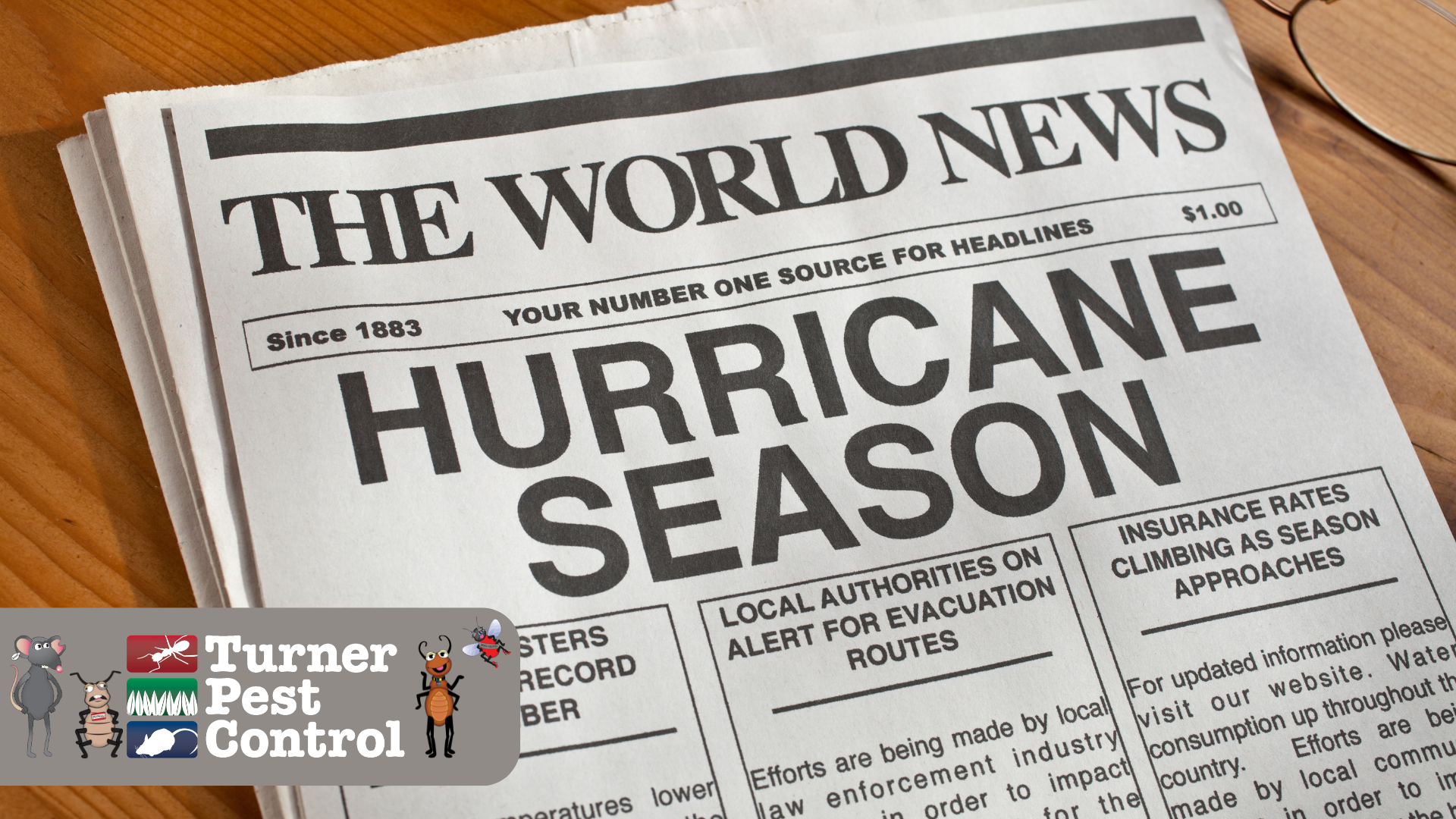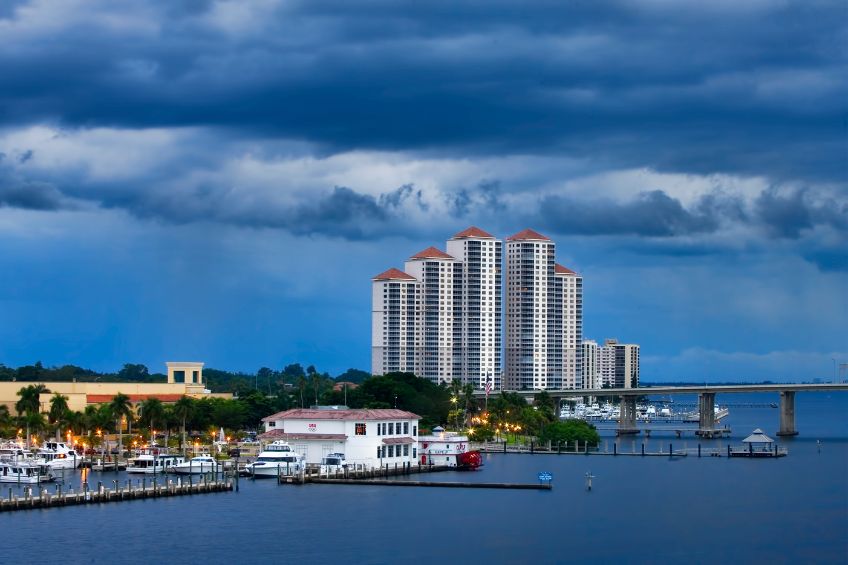
Turner’s Hurricane Season Pest Checklist: What to Do Before and After the Storm
Protect Your Home From Pests—Not Just the Weather
In Florida and across the Southeast, hurricane season brings more than just high winds and flooding—it also brings a surge in pest activity. Heavy rain, warm temperatures, and structural damage create the perfect conditions for mosquitoes, rodents, termites, and wildlife to invade homes.
That’s why it’s critical to prepare for hurricane pest pressures before the storm hits—and to take quick action afterward. Use this hurricane season pest checklist to protect your property from pests and minimize the risk of infestations after a hurricane or major storm.
✅ Before the Storm: Pest Prevention Steps
1. Seal Potential Entry Points
Walk around your home and inspect for gaps around windows, doors, soffits, roof vents, and utility lines. Use caulk, steel mesh, or weatherstripping to block small openings—mice can enter through a hole the size of a dime.
2. Trim Back Trees and Shrubs
Overhanging branches and dense shrubs create pest bridges to your roof. Trim back vegetation at least 2–3 feet from the exterior of your home to prevent easy access for rodents and wildlife.
3. Clear Gutters and Downspouts
Clogged gutters collect standing water—ideal for mosquito breeding. Ensure water can flow freely and away from your foundation.
4. Store Trash and Pet Food Securely
Storms may knock over bins and scatter food sources, attracting pests like raccoons and rodents. Keep trash tightly sealed and bring pet food indoors.
5. Move Outdoor Items Indoors
Planters, toys, birdbaths, and tarps can collect rainwater. Bring them inside or turn them over to eliminate mosquito breeding spots.
6. Schedule a Pre-Storm Pest Inspection
Turner’s technicians can inspect your home and identify pest vulnerabilities before the storm arrives—saving you time and trouble later.
✅ After the Storm: Post-Storm Pest Control Checklist
1. Remove Debris Promptly
Storm debris provides shelter for pests like rodents, snakes, and cockroaches. Clean up piles of branches, leaves, and trash from your yard as soon as it’s safe to do so.
2. Check for Signs of Wildlife Intrusion
Listen for scratching in the attic, look for droppings, and inspect vents or soffits for damage. Displaced wildlife such as squirrels, raccoons, or opossums may take refuge in your attic or crawlspace.
3. Eliminate Standing Water
After a storm, remove water from pots, toys, tarps, and low-lying areas. Mosquitoes can breed in as little as a bottlecap of water—fast action helps prevent an outbreak.
4. Inspect for Water Damage
Wet wood and drywall attract termites and ants. Dry out affected areas, and use fans or dehumidifiers to prevent mold and pest infestations.
5. Check for Entry Points Again
High winds and flying debris can create new access points. Re-inspect your roof, siding, windows, and vents for damage and seal any gaps you find.
6. Schedule a Post-Storm Pest Inspection
Whether you suspect activity or just want peace of mind, our licensed pest control pros will assess your home for pests, apply treatments as needed, and recommend steps to prevent future issues.
🛡️ Why Pest Protection Is Critical During Hurricane Season
Storms may pass in a day—but the pest problems they cause can linger for weeks or months. From mosquitoes to rodents, wildlife to termites, pests don’t wait for things to settle down. In fact, storm damage gives them more ways in and more reasons to stay.
Turner Pest Control is here to help you stay protected before and after every storm, with services including:
-
Mosquito control
-
Wildlife exclusion
-
Termite protection
-
Rodent control
-
General pest prevention and cleanup
🏠 Stay Ready, Stay Pest-Free
Hurricane prep isn’t just about stocking up on supplies—it’s about safeguarding every part of your home. Use this pest control checklist as part of your storm readiness plan, and count on Turner to help when it matters most.
📞 Call (800) 225-5305 or visit TurnerPest.com to schedule your pre- or post-storm pest inspection today.



